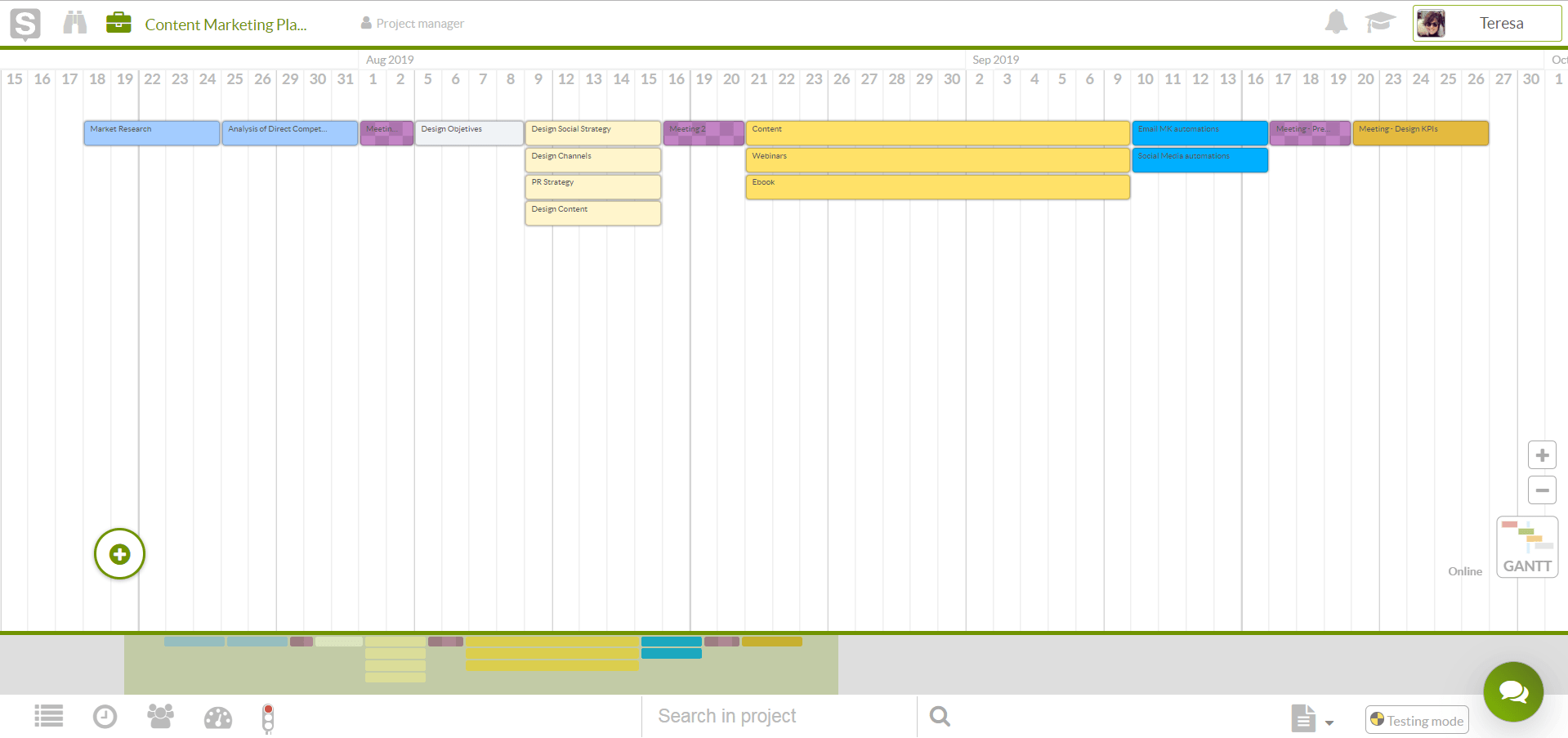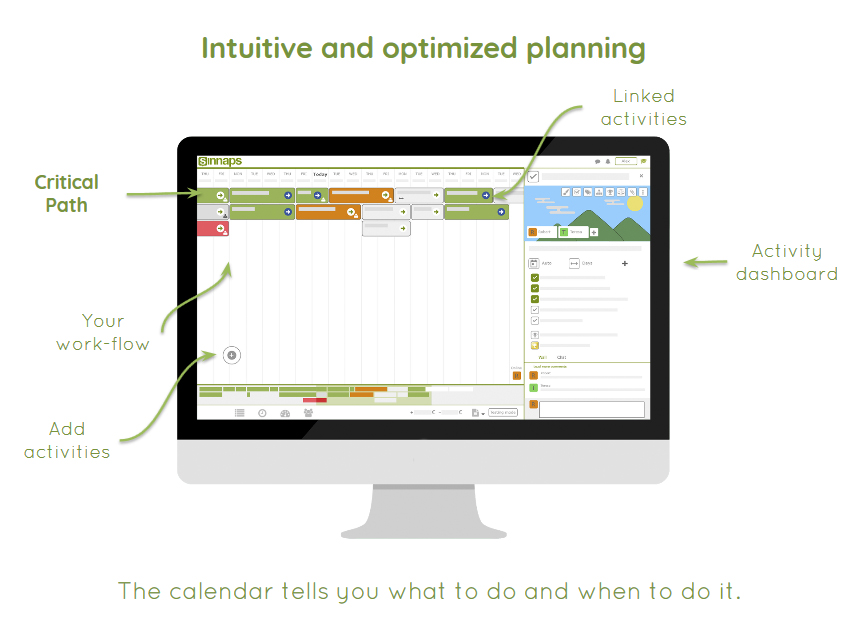For some folks, working with Agile software almost gives them the impression that there’s no need for planning. After all, it’s Agile. This, however, is not certainly the case. Agile planning provides teams with an opportunity to understand what the long-term goals are for their products as well as help with implementation of certain strategies necessary for achieving those set goals and objectives. It is not surprising however, that teams that engage in proper Agile capacity planning produce more meaningful results than those who do not.

One good feature of Agile, is that it doesn’t make use of the traditional top-down pattern of getting things done. Instead, it coordinates the efforts of all who are involved in the project in developing a process for the entire team.
In this article, we’re going to discuss how teams can take advantage of Sinnaps online project management tool, and all its Agile strategic planning features including its easy-to-use Agile planning boards, task tracking and estimating resources, etc., to perfect long-term strategies for all their projects. It doesn’t matter whether you’re practicing Agile project management with Kanban or other variations, the results would always speak for itself.
Agile Planning
Agile planning takes on a collaborative perspective, and differs quite profoundly from other traditional project management methods as we have seen in the opening part of the article, thus, we would expect things to be a little different from what they would be in another setting.
When Agile teams engage in Agile meetings to plan their projects, the entire session is anchored on providing answers to questions including but not limited to what is to be built, what the cost would be, whom is going to be involved as well as when the project is expected to be completed.
Agile iteration planning sessions also seeks to account for hidden or unidentified project dependencies for various components of the project with a view to minimizing time spent on individual tasks with a view to optimizing product delivery window.
Agile Planning and Backlog Tool

In general, the entire concept of planning spans from the need to have a clear-cut picture in accordance to the levels of Agile planning which encompasses project vision, production roadmap, release plan, iteration plan, daily plan and all such activities which culminates into having a working product ready in stipulated time. Let’s consider the various levels of Agile planning.
Agile Release Planning
Agile release planning differs considerably from other project management frameworks in that it is wired to release a set of product increment to the customer during a specific period of time, i.e., during sprints. Agile release planning takes into consideration, the specific product vision for the product in question as well as how it conforms to the business strategy.
One way to better understand the idea of release planning is to look at it from the angle of product backlog which contains an ordered list of project items, ranked in order of their priority. I.e., top-level items in your prioritised backlogs are those which will be rolled out in the next iteration.
With Sinnaps, you could easily make all your release plans, visualize them and execute them accordingly.
Let’s consider a couple of tips that should suffice for effective release planning:
- Channel greater attention on the goals, as well as benefits and results of the project
- Consider dependencies carefully.
- Try as much as you can, to have the project owner, stakeholders as well as anyone who will be affected by the project is available for the release planning, as they will help identify dependencies as well as commit to the release in any way possible.
- Have an ordered list of prioritised backlogs include all features to be included in the release. This can be written on Agile planning cards.
- Resist the urge to release products just for the sake of it. Rather, ensure that each product to be released is a working product.
- Take note that there is the scope for improvement with each release process, and discuss this in your sprint retrospective meetings, as it will help you deliver more product value.
Scrum Backlog Example

Agile Software Development Life Cycle
Agile software development life cycle embraces agile management principles in the development of technology by enabling the agile team to break down the lengthy requirements of the projects, build and test phases down into smaller components and assisting the team in delivering working agile software rapidly.
The following process flows are involved in agile system development life cycle:
- Concept
- Inception
- Iteration
- Release
- Production
- Retiremen
Agile Estimation and Planning
Agile estimation and planning provide insight into what is needed to successfully complete a project, including the level of effort to be put in for each work item according to its priority in the product backlog.
Agile estimation and planning are collaboration processes which requires input from every team member to succeed. The product owner prioritises the backlog, providing descriptions for all desired features for the product. But there is only so much a product owner knows. They can put down requirements, but have no technical understanding when it comes to the details of implementation. Having fulfilled his part, the project team comes in, with an estimate of what it would require to produce a working product.
How to prioritise with the Critical Path?

With a knowledge of the desired product, the development team steps up with its perspective on the product, including work required to deliver a high-end user story, and then the design team and so on and so forth.
In general, Agile resource planning activities are not to be carried out in a vacuum. Rather, this process requires input from the entire project team in order to create high-quality estimates for effective project completion.
Why Should you Implement Agile Estimation and Planning?
- Agile long-term planning and estimation exposes project teams to possible risks that may be encountered during the project
- If uncertainties are discovered, more knowledge would be sought out mitigate their effect
- It establishes a basis for effective decision making, using insight into cost and schedule dynamics
- Leads to successful project completion
What is a critical path and how does it help us to meet deadlines?
Ready to begin your Agile planning activity? It is always important to keep in mind that requirements and a whole lot may change by the time a team begins to work on items in a project, rendering prior estimates inaccurate. Also, it is important that the team is on the same page as other project members, internal or external to the project.
In this regard, a well-rounded agile tool will suffice, with which you could easily keep track of project backlogs, go over requirements, create accurate estimates, collaborate with teams, whether remotely or otherwise and generally stay on top of your project.

